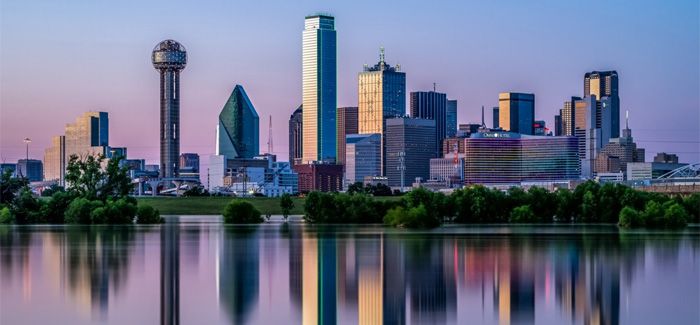Dallas Weather: A Comprehensive Guide
Dallas, Texas, is a city of vibrant culture, iconic history, and diverse weather patterns. Known for its hot summers and mild winters, Dallas's climate offers unique experiences throughout the year. Whether you're a resident or a visitor, understanding Dallas's weather can help you make the most of your time in this bustling metropolis.
This blog will guide you through the seasonal changes in Dallas, the city’s extreme weather phenomena, and tips for navigating its diverse climate.
Overview of Dallas Climate
Dallas is situated in North Texas and experiences a humid subtropical climate. This means the city encounters a mix of hot summers, mild winters, and moderate rainfall throughout the year. Here’s a quick snapshot of the annual weather:
- Average Annual Temperature: Around 66°F (19°C).
- Rainfall: Dallas receives about 37 inches of rain annually, with May being the wettest month.
- Sunshine: The city enjoys approximately 230 sunny days a year, making it a great destination for outdoor enthusiasts.
Seasonal Breakdown: Dallas Weather
Winter (December to February)
Winters in Dallas are relatively mild compared to the harsh cold experienced in northern cities. Snowfall is rare but not impossible.
- Temperature Range: 37°F to 57°F (3°C to 14°C).
- Notable Features: Cold fronts, occasional freezing rain, and light snowfall.
- What to Do: Explore indoor attractions like the Dallas Museum of Art or the Perot Museum of Nature and Science. Outdoor activities are still enjoyable on sunny winter days.
Spring (March to May)
Spring is one of the best times to visit Dallas. The weather is pleasant, and the city comes alive with festivals and blooming flowers.
- Temperature Range: 50°F to 80°F (10°C to 27°C).
- Notable Features: Increasing temperatures and frequent thunderstorms, especially in late spring.
- What to Do: Attend the Dallas Blooms festival at the Dallas Arboretum or enjoy outdoor dining at local restaurants.
Summer (June to August)
Summers in Dallas are hot and humid, often reaching triple-digit temperatures. The city’s residents and visitors rely on air conditioning and water-based activities to beat the heat.
- Temperature Range: 75°F to 96°F (24°C to 36°C).
- Notable Features: High heat indices and occasional heatwaves.
- What to Do: Cool off at waterparks like Hawaiian Falls or take a trip to nearby lakes such as Joe Pool Lake for boating and swimming.
Autumn (September to November)
Autumn in Dallas brings relief from the summer heat, with cooler temperatures and less humidity. The season is also marked by vibrant foliage and outdoor events.
- Temperature Range: 55°F to 78°F (13°C to 26°C).
- Notable Features: Clear skies, comfortable weather, and fewer thunderstorms.
- What to Do: Visit the State Fair of Texas, one of the city’s most iconic events, or hike at Cedar Ridge Preserve.

Extreme Weather in Dallas
Dallas’s location in North Texas makes it prone to some extreme weather conditions, which are important to be aware of:
- Thunderstorms and Tornadoes:
- Spring and early summer are peak times for severe weather, including thunderstorms and the occasional tornado.
- Dallas lies within "Tornado Alley," though the city center rarely sees direct hits.
- Heatwaves:
- Summers can bring prolonged heatwaves, with temperatures exceeding 100°F (38°C).
- These periods require precautions like staying hydrated and avoiding prolonged outdoor activities.
- Winter Storms:
- While infrequent, winter storms can bring ice and freezing rain, disrupting travel and daily routines.
Read Also: Miami Weather: A Year-Round Guide to Tropical Bliss
Tips for Navigating Dallas Weather
Navigating Dallas’s diverse climate requires a bit of preparation. Here are some tips to help you enjoy the city, no matter the season:
- Stay Hydrated in Summer:
The Dallas heat can be intense. Always carry a water bottle and seek shade during peak afternoon hours. - Dress in Layers:
The temperature can fluctuate significantly between day and night, especially in spring and fall. Layered clothing helps you stay comfortable. - Be Prepared for Storms:
During stormy seasons, keep an eye on weather forecasts and download an app like NOAA Weather Radar for alerts. - Embrace Indoor Activities:
When the weather gets too extreme, Dallas offers a wealth of indoor attractions like shopping malls, museums, and theaters. - Plan for Outdoor Adventures:
In the cooler months, explore Dallas’s parks, trails, and outdoor festivals to make the most of the pleasant weather.
Best Time to Visit Dallas
While Dallas is a year-round destination, the best times to visit are spring and fall. During these seasons, the weather is mild, making it perfect for outdoor exploration and cultural events.
- Spring Highlights: Dallas Blooms, Earth Day celebrations, and food festivals.
- Fall Highlights: State Fair of Texas, Dallas Arboretum Pumpkin Village, and Oktoberfest events.
Why Dallas Weather is Unique
Dallas’s weather contributes significantly to the city’s character. The hot summers inspire a vibrant pool culture and outdoor water activities, while the mild winters allow residents and visitors to enjoy outdoor events nearly year-round. The occasional extremes, like spring storms or summer heat, are balanced by the city’s resilience and preparedness.
From family-friendly activities to adventurous outings, Dallas’s climate offers something for everyone. Whether you're sipping iced tea under the Texan sun or cozying up indoors during a rare winter storm, the weather adds a dynamic element to life in this energetic city.
Understanding Dallas weather is key to making the most of your time in this dynamic city. Its warm hospitality, paired with its diverse climate, ensures that every visit is memorable. From sunny summers to crisp autumns, Dallas offers an ever-changing backdrop for exploration and adventure. By planning around the weather, you can fully embrace everything this vibrant Texan metropolis has to offer.



One thought on “Dallas Weather: Understanding the City’s Climate Across the Seasons”